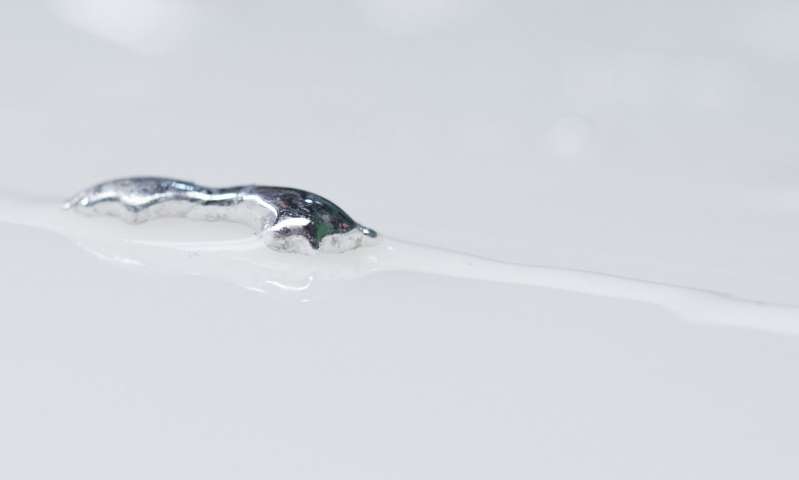Liquid metal discovery ushers in new wave of chemistry and electronics
Researchers from RMIT University in Melbourne, Australia, have used liquid metal to create two-dimensional materials no thicker than a few atoms that have never before been seen in nature.
The incredible breakthrough will not only revolutionize the way we do chemistry but could be applied to enhance data storage and make faster electronics. The "once-in-a-decade" discovery has been published in Science.
The researchers dissolve metals in liquid to create very thin oxide layers, which previously did not exist as layered structures and which are easily peeled away.
Once extracted, these oxide layers can be used as transistor components in modern electronics. The thinner the oxide layer, the faster the electronics are. Thinner oxide layers also mean the electronics need less power. Among other things, oxide layers are used to make the touch screens on smartphones.
Once extracted, these oxide layers can be used as transistor components in modern electronics. The thinner the oxide layer, the faster the electronics are. Thinner oxide layers also mean the electronics need less power. Among other things, oxide layers are used to make the touch screens on smartphones.
The research is led by Professor Kourosh Kalantar-Zadeh and Dr. Torben Daeneke from RMIT's School of Engineering, who with students have been experimenting with the method for the last 18 months.
"When you write with a pencil, the graphite leaves very thin flakes called graphene, that can be easily extracted because they are naturally occurring layered structures," said Daeneke. "But what happens if these material don't exist naturally?
"Here we found an extraordinary, yet a very simple method to create atomically thin flakes of materials that don't naturally exist as layered structures.
"We use non-toxic alloys of gallium (a metal similar to aluminum) as a reaction medium to cover the surface of the liquid metal with atomically thin oxide layers of the added metal rather than the naturally occurring gallium oxide

